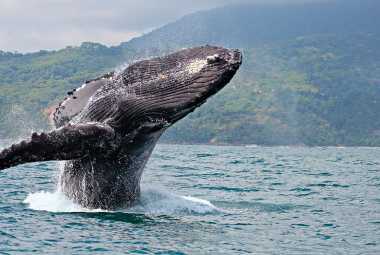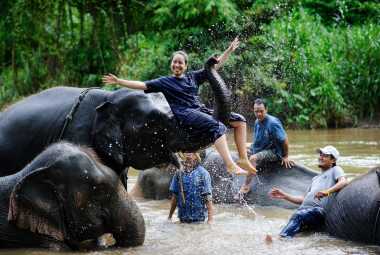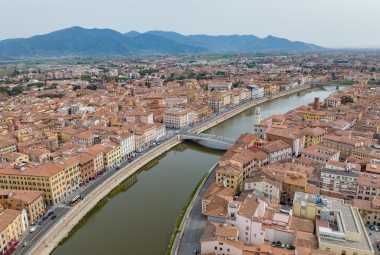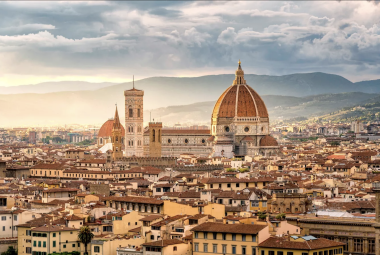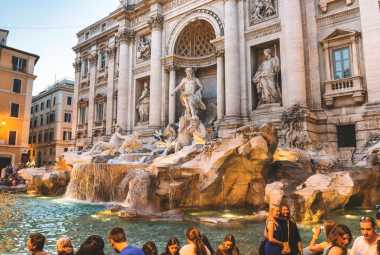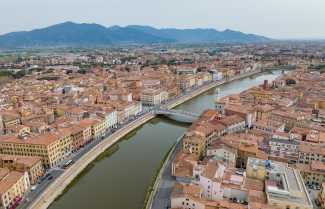Image by kimkim.com
*Vacation Mode is a for-profit site. It contains paid banner advertisements that are generated and managed by a third-party network. This site also includes relevant affiliate links (both in the content and on the sidebar) all of which we do our best to clearly mark as such.
Quick Summary
- Thailand is renowned for its rich history, diverse culture, stunning beaches, and vibrant cities.
- The history of Thailand includes the Kingdom of Sukhothai in the 13th century, the Ayutthaya Kingdom from the 14th to 18th centuries, and the establishment of the Chakri Dynasty in 1782 under King Rama I.
- The name "Thailand" signifies "free" or "liberated," reflecting the nation's independence throughout history.
- Thailand's national flag, featuring red, white, and blue stripes, symbolizes nation, religion, and king, embodying unity and patriotism.
- Thai culture is influenced by Buddhism, which emphasizes compassion, mindfulness, and spiritual enlightenment, permeating daily life and practices.
- Traditional Thai customs include the "wai" greeting, respect for elders, and festivals like Songkran and Loy Krathong, showcasing community spirit and tradition.
- Buddhism's impact is evident in Thai temples' architecture, art, festivals, and daily rituals.
- Popular tourist destinations include Bangkok's Grand Palace, Chiang Mai, Phi Phi Islands, and various beaches like Railay Beach and Patong Beach.
- Key beaches in Thailand offer a mix of natural beauty and recreational activities, with options like Koh Lanta and Koh Samui.
- Must-visit temples, such as Wat Phra Kaew and Wat Arun, highlight Thailand's architectural marvels and spiritual heritage.
- Major cities like Bangkok, Chiang Mai, and Krabi offer diverse experiences, from street food and markets to ancient temples and natural landscapes.
- Traveling to Thailand involves understanding visa requirements, health precautions, currency (Thai Baht), and safety tips.
- Embracing Thai culture requires modest attire, respectful behavior, and understanding local customs, such as removing shoes before entering homes or temples.
- Tips for first-time travelers include packing light, using local transportation, trying traditional dishes, and respecting cultural nuances.
Thailand, a country rich in history and culture, is a popular tourist destination known for its stunning beaches, ancient temples, and vibrant cities.
cc We will also delve into the diverse culture of Thailand, including its main religions and traditional customs influenced by Buddhism.
We will share the top tourist destinations in Thailand and answer common questions about traveling to this beautiful country. Whether you are a first-time traveler or a seasoned explorer, this article will provide you with valuable insights on how to respect Thai culture and make the most of your trip.
So, get ready to immerse yourself in the wonders of Thailand!
What is the History of Thailand?
The history of Thailand is a rich tapestry of cultural influences, dynasties, and societal developments that have shaped the nation into what it is today.
From its early roots as the Kingdom of Sukhothai in the 13th century, to the establishment of the Ayutthaya Kingdom which flourished from the 14th to the 18th centuries, Thailand's historical timeline is marked by a series of dynamic rulers and significant milestones.
The founding of the Chakri Dynasty in 1782 under King Rama I ushered in a period of stability and territorial expansion. Thailand, then known as Siam, navigated through colonial pressures and emerged as one of the few Asian nations to maintain its independence during the era of imperialism.
How did Thailand get its name?
The name 'Thailand' has its origins in the Thai language, where 'Thai' means 'free' or 'liberated,' reflecting the country's historical ability to remain independent.
This linguistic root of 'Thai' not only signifies freedom but also plays a significant role in shaping Thailand's cultural identity. It embodies the essence of autonomy and self-determination that has been a cornerstone of the nation's history. The term 'Thailand' thus carries deep symbolic meaning, highlighting the resilience and spirit of the Thai people in preserving their sovereignty. Beyond just a name, it encapsulates the spirit of a nation that has stood tall against external influences, maintaining its unique heritage and traditions.
When was Thailand founded?
Thailand, known historically as Siam, traces its origins back to the founding of the Kingdom of Sukhothai in the 13th century by King Sri Indraditya.
Under the reign of succeeding monarchs such as King Ramkhamhaeng, Sukhothai flourished as a center of Thai civilization and culture, setting the stage for the expansion of the Thai state. The subsequent rise of the Ayutthaya Kingdom, established in 1350 by King Ramathibodi I, marked a pivotal moment in the country's history, solidifying Thai dominance in the region. Ayutthaya's strategic location allowed for extensive trade networks, cultural exchange, and political influence, laying the foundation for modern Thailand's development."
What is the significance of the Thai flag?
The Thai flag, with its tricolor design of red, white, and blue, symbolizes the nation's principles of nation, religion, and king, embodying unity and patriotism.
This iconic flag was officially adopted on September 28, 1917, after undergoing several design modifications. The horizontal stripes represent different aspects of Thai society and identity. The red stripe signifies the bloodshed of Thai people in defense of their country, white symbolizes purity and the good deeds of the people, and blue represents the monarchy and the institution of the monarchy in Thailand's history. The flag's design is deeply rooted in Thai culture and history, reflecting the nation's rich heritage and significance.
What is the Culture of Thailand?
The culture of Thailand is a vibrant blend of traditions, beliefs, and practices that reflect the country's deep-rooted heritage and diverse influences.
Exploring the cultural landscape of Thailand unveils a rich tapestry of art, with intricate handcrafted textiles, stunning murals in temples, and intricate sculptures that showcase the artistic prowess of the Thai people.
Music also plays a significant role in Thai culture, with traditional instruments like the khim and ranat contributing to the melodic tunes heard at ceremonies and performances.
Festivals such as Songkran, Loy Krathong, and Phi Ta Khon are celebrated with great fervor, highlighting the spirit of community and reverence for tradition.
Social customs like the wai greeting and the importance of respect for elders underscore the values of humility and harmony in Thai society.
What are the main religions in Thailand?
Buddhism stands as the predominant religion in Thailand, shaping societal norms, values, and practices with its emphasis on compassion, mindfulness, and spiritual enlightenment.
The pervasive influence of Buddhism in Thai culture extends beyond religious practices, permeating various aspects of everyday life. From the vibrant temple complexes that dot the landscape to the morning alms rounds of monks clad in saffron robes, the presence of Buddhist rituals is ubiquitous.
Thai people often incorporate Buddhist teachings into their daily routines, whether through morning prayers, offerings at shrines, or participating in merit-making ceremonies. This integration of spiritual beliefs into daily life fosters a profound sense of community and interconnectedness among the Thai people, reflecting the core tenets of Buddhism.
What are some traditional Thai customs and practices?
Traditional Thai customs encompass a wide array of practices, from respectful greetings known as 'wai' to vibrant festivals like Songkran that celebrate the Thai New Year.
These customs are deeply rooted in the rich history of Thailand, reflecting the country's reverence for tradition and community. In addition to the 'wai,' where individuals press their palms together in a gesture of respect, Thai culture places a strong emphasis on proper etiquette and interpersonal relations. Rituals such as offering food to monks in the morning or participating in Loy Krathong, a festival of lights where floats are released onto rivers and lakes, showcase the spiritual and communal aspects of Thai society.
How does Buddhism influence Thai culture?
The pervasive influence of Buddhism in Thai culture is evident in architecture, art, festivals, and daily rituals that reflect the core teachings of compassion, karma, and impermanence.
This influence can be seen in the intricate designs of Thai temples, where intricate carvings and statues of Buddha convey symbolic meanings of enlightenment and inner peace. Thai traditional dances often depict stories from Buddhist scriptures, showcasing the value of morality and righteousness in society. The emphasis on mindfulness and meditation in Buddhist practice has permeated Thai lifestyle, promoting a sense of inner harmony and spiritual well-being among the people.
What are the Most Popular Tourist Destinations in Thailand?
Thailand boasts a myriad of enchanting tourist destinations that cater to diverse interests, from pristine beaches and ancient temples to bustling cities and lush national parks.
Among the most iconic landmarks in Thailand is the Grand Palace in Bangkok, a stunning complex of buildings that served as the official residence of the Kings of Siam. Visitors can marvel at the intricate architecture and exquisite detailing that reflect the country's rich history and cultural heritage.
In addition, the northern city of Chiang Mai offers a blend of ancient temples, vibrant night markets, and the opportunity to explore the nearby mountainous regions. For those seeking natural wonders, the Phi Phi Islands with their crystal-clear waters and limestone cliffs are a paradise for snorkeling and diving enthusiasts.
What are the top beaches in Thailand?
Thailand is renowned for its stunning beaches, with highlights including the azure waters of Phi Phi Islands, the golden sands of Railay Beach, and the vibrant shores of Patong Beach in Phuket.
The allure of Thailand's coastal beauty extends beyond these popular spots; from the tranquil shores of Koh Lanta to the crystal-clear waters of Koh Samui, each beach offers a unique blend of natural splendor and recreational opportunities.
Whether you seek a laid-back escape or thrilling water sports, Thailand's beaches cater to all preferences. Immerse yourself in the local culture by exploring bustling beach towns, savoring fresh seafood by the shore, or indulging in a rejuvenating seaside massage.
With a plethora of beachside accommodations, ranging from luxury resorts to charming bungalows, you can unwind in style amidst breathtaking ocean views.
What are the must-visit temples in Thailand?
Thailand's temples, or 'wats,' are architectural marvels that showcase intricate designs, gilded embellishments, and profound spiritual significance, with iconic sites like Wat Phra Kaew and Wat Arun captivating visitors.
These temples serve as testaments to Thailand's rich cultural heritage, reflecting a blend of traditional Thai artistry and religious elements. Each temple has a unique story to tell, with intricate murals depicting mythological tales and ornate pagodas reaching towards the sky.
Visitors can witness monks going about their daily rituals, adding to the sense of tranquility and spirituality that permeates these sacred grounds. Exploring Thailand's temples provides a deeper insight into the country's history and spiritual traditions, making it a truly enriching experience for anyone seeking a glimpse into Thailand's soul.
What are the best cities to visit in Thailand?
Thailand's cities offer a diverse tapestry of experiences, from the vibrant street life of Bangkok to the cultural charm of Chiang Mai and the coastal allure of Krabi, providing something for every traveler's preference.
- Exploring Bangkok, one can immerse in the bustling markets of Chatuchak, sample mouthwatering street food like Pad Thai and Tom Yum, and marvel at the grandeur of the Grand Palace.
- In Chiang Mai, visitors can wander through the ancient temples of Wat Chedi Luang, indulge in traditional Lanna cuisine, and partake in the vibrant Night Bazaar.
- Meanwhile, Krabi beckons with its stunning limestone cliffs, pristine beaches like Railay Beach, and opportunities for island-hopping adventures to places like Phi Phi Islands, making it a paradise for nature lovers and adventure seekers.
What are the Most Commonly Asked Questions about Traveling to Thailand?
Traveling to Thailand raises a myriad of questions for visitors, from visa requirements and safety concerns to currency exchange and local cuisine recommendations.
- One common query among travelers heading to Thailand is regarding the entry regulations. Visitors from many countries can enter Thailand without a visa for a specified period, while others may need a visa on arrival or apply for one in advance. It's advisable to check the current requirements with the Thai embassy or consulate in your home country before departing.
- In terms of health precautions, it is recommended to drink bottled water, avoid consuming street food from dubious stalls, and consider vaccinations for diseases common in the region.
- Getting around in Thailand is relatively easy, with options like tuk-tuks, taxis, buses, and the efficient BTS Skytrain in Bangkok.
- Embracing the rich cultural experiences in Thailand, such as visiting stunning temples like Wat Pho or partaking in a traditional Thai cooking class, can truly enrich your journey.
Do I need a visa to visit Thailand?
Visa requirements for visiting Thailand vary based on nationality and intended duration of stay, with many countries eligible for visa exemption or visa-on-arrival facilities.
Individuals from countries that do not qualify for visa exemption or visa-on-arrival can apply for different types of visas depending on their purpose of visit, such as tourist visas, business visas, or education visas.
For instance, tourist visas are typically valid for stays of up to 60 days and can be applied for at Thai embassies or consulates in advance. Business visas often require documentation from the inviting company in Thailand, while education visas necessitate enrollment in a recognized educational institution.
What is the currency used in Thailand?
The official currency of Thailand is the Thai Baht, denoted by the symbol '฿,' and widely accepted across the country for transactions, purchases, and payments.
Thai Baht is divided into smaller units, such as satang, with 100 satang equaling 1 Baht. When exchanging currency, it's advisable to use official exchange counters or banks to ensure fair rates.
Most towns and cities in Thailand have numerous ATMs for easy cash withdrawals. Credit cards are accepted at larger establishments, but it's wise to carry cash for smaller vendors and markets. Be cautious of inflated exchange rates at airports and tourist areas.
Handling your money smartly can enhance your travel experience in Thailand.
Is it safe to travel to Thailand?
Thailand is generally considered a safe travel destination, with low crime rates and welcoming locals, though visitors are advised to exercise caution in crowded areas and be mindful of common scams.
While exploring bustling markets or busy tourist spots, it's wise to keep an eye on your valuables, such as wallets and bags, to prevent theft.
To enhance your safety, opt for registered taxis or reputable transportation services to avoid falling prey to unauthorized operators.
In case of any concerns or emergencies, memorize or keep a handy list of emergency numbers for local authorities or your country's embassy.
Staying informed about current events and travel advisories in Thailand can help you make informed decisions while enjoying your trip.
What are some popular dishes to try in Thailand?
Thai cuisine offers a tantalizing array of flavors and dishes, with favorites like Pad Thai, Tom Yum Goong, and Green Curry delighting taste buds with their aromatic spices and fresh ingredients.
Exploring the diverse culinary landscape of Thailand unveils a rich tapestry of flavors and textures that cater to a wide range of palates. From the bustling street markets serving up tantalizing dishes like Som Tum (green papaya salad) and Moo Ping (grilled pork skewers) to the sophisticated dining establishments where dishes like Gaeng Daeng (red curry) and Khao Pad (fried rice) showcase the depth of flavors, every culinary experience in Thailand is a journey of sensory discovery.
How to Respect Thai Culture and Customs while Traveling?
Respecting Thai culture and traditions is paramount for travelers, encompassing aspects such as modest attire, polite behavior, and awareness of local customs to foster positive interactions and cultural appreciation.
When visiting Thailand, it is customary to remove your shoes before entering someone's home or a place of worship as a sign of respect.
Addressing others with a slight bow, known as the 'wai,' shows politeness. It's essential to avoid public displays of affection and to speak softly in public places.
Learning a few basic Thai phrases like 'hello' and 'thank you' can go a long way in showing your interest in the local culture.
Embracing these practices not only enriches your travel experience but also promotes harmony and understanding between cultures.
What are Some Tips for First-Time Travelers to Thailand?
First-time travelers to Thailand can benefit from a range of tips and advice to enhance their experience, including packing essentials, navigating transportation, sampling local cuisines, and embracing cultural nuances.
When preparing for your trip to Thailand, don't forget to pack light and breathable clothing to combat the tropical heat. As you explore the bustling streets of Bangkok or relax on the pristine beaches of the islands, comfortable footwear will be your best companion.
For transportation, consider utilizing the efficient and affordable Skytrain in Bangkok or trying a tuk-tuk for a more adventurous ride. Be sure to indulge in traditional dishes like Pad Thai and som tam at local eateries to truly savor the vibrant flavors of Thai cuisine.
Frequently Asked Questions
What are the top tourist spots in Thailand?
Some of the most popular tourist spots in Thailand include Bangkok, Chiang Mai, Phuket, Krabi, and Koh Samui.
What is the best time to visit Thailand?
The best time to visit Thailand is from November to March, when the weather is pleasant and there are fewer chances of rain.
What is the currency used in Thailand?
The currency used in Thailand is the Thai Baht (THB). It is best to exchange your currency for baht at banks or authorized exchange booths.
What are some traditional dishes to try in Thailand?
Some traditional dishes to try in Thailand include Pad Thai, Tom Yum Goong, Green Curry, and Mango Sticky Rice.
What are some cultural customs to keep in mind while visiting Thailand?
It is important to dress modestly, remove your shoes before entering a home or temple, and avoid public displays of affection. It is also polite to greet others with a wai, a traditional Thai gesture of respect.
What are some must-see temples in Thailand?
Some must-see temples in Thailand include Wat Phra Kaew (Temple of the Emerald Buddha), Wat Arun (Temple of Dawn), and Wat Pho (Temple of the Reclining Buddha).


